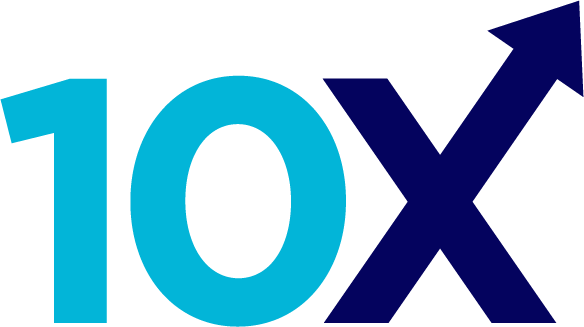Otherwise, You’ll Wither on the Vine
What am I talking about? I’m talking about the importance of continually prospecting for new donors. Even in challenging economic times. In fact, especially in challenging economic times. Systematic acquisition efforts are key to your long-term growth and success. Without them, your organization risks stagnating or even shrinking. The Power of Donor Acquisition A little more than ten years ago, John Davis took charge of the Leadership Institute’s direct mail fundraising program. At the time, the Institute had about 10,000 active donors and was mailing 100,000 new-donor acquisition packages a year. That might sound impressive, but John and the team knew they could do more. So, they did. The direct mail prospecting program, a core component of the Leadership Institute’s long-term fundraising strategy, follows a classic pipeline approach: Smart acquisition efforts bring in first-time donors. Effective stewardship programs lead to repeat giving. Ongoing cultivation transforms annual donors into major and estate givers. Simple, right? This is Fundraising 101. But the trick is maintaining the discipline and commitment to see this strategy through over time. Aggressive Prospecting Pays Off When John began in his role, Leadership Institute founder Morton Blackwell gave him a challenge: prioritize prospecting, even if it meant borrowing money to invest in donor acquisition. Morton’s conviction that donor acquisition was key to the organization’s future led to a significant increase in prospecting efforts. Initially, the team ramped up from mailing 100,000 acquisition packages to 1,000,000 per year. By last year, the Leadership Institute had mailed more than 8,000,000 prospecting letters. The results? They’ve grown from 10,000 active donors to nearly 100,000, and donor revenue jumped from $7 million to over $29 million annually. Last year alone, revenue increased by 44%. Why Does This Work? The Leadership Institute has demonstrated that it can recover its prospecting investment within two years. After that, renewals from these new donors provide an incredible stream of revenue. With consistent stewardship, donor giving increases year over year. They plan their new-donor acquisition around recovering $0.50 for every $1 spent, and as long as they hit that target, they continue mailing at scale. Each year’s prospecting efforts build on the previous ones, creating a compounding growth effect. The Importance of Prospecting in Tough Times So, what does this mean for fundraising in difficult economic times? It’s easy to see the short-term challenges—falling stock markets, rising interest rates, and general economic uncertainty. But the long-term strategy remains the same: systematic acquisition efforts ensure your organization’s future growth. Leadership Institute’s approach has proven that steady, smart prospecting brings long-term revenue growth, even when the economic landscape looks rocky. Stay tuned as we delve deeper into how large organizations like the Leadership Institute, American Target Advertising, and the Heritage Foundation navigate their fundraising efforts during challenging times.
Ready to Paddle Upstream?

It’s not as crazy as it seems. In challenging times like these, making bold moves in fundraising can feel like paddling upstream, but it’s a strategy that can set you apart. Soon, you’ll appreciate just how smart you were to take that approach. Last week, we discussed the importance of continually prospecting for new donors—especially in tough economic times. John Davis’ amazing example at the Leadership Institute provided a compelling “why” for this strategy. Today, let’s dive a bit deeper into the “what” and how you can apply it to your own fundraising efforts. Why Donor Acquisition Is Key Donor acquisition is an engine that creates long-term value. As John Davis has said, done well, donor acquisition will drive your organization forward for decades to come. The Leadership Institute’s strategy of systematically acquiring donors is a prime example. They invested in acquisition efforts, and the returns have been transformative. Since revamping their prospecting efforts in 2012, the Leadership Institute’s donor revenue from direct mail has increased by $15 million—an extraordinary return on investment. This brings us to a crucial point: Donor attrition is inevitable. Donors move on for various reasons—shifting priorities, financial setbacks, or simply losing interest. That’s why you must continuously replace lost donors to maintain and grow your revenue. How to Build a Smart Acquisition Program If you’ve been hesitant to launch a robust donor acquisition program, you’re not alone. I’ve heard plenty of concerns: How do I find good lists? We’ve tried it, and it didn’t work. We lack the resources. I don’t have the time or talent. The board won’t approve it. The good news is that these challenges can be overcome. John Davis offers a valuable piece of advice: Focus on maximizing lifetime value and tune out the noise. Instead of searching for magical new techniques, start by understanding the lifetime value of your donors. If you’re already generating healthy lifetime value, focus on increasing the number of donors. If not, dig into what might be going wrong. Navigating a Recession With a potential recession looming, it’s easy to get spooked. But here’s what John advises: Avoid the temptation to overcorrect. Every recession is different, and reacting too quickly can cause more harm than good. Instead, focus on your data. It will guide you through periods of volatility and help you make informed decisions. Kathleen Patten and Carsten Walter have both emphasized the importance of sticking to your mission and leaning into your brand during uncertain times. Donors are more likely to stick with organizations they believe are doing the most important work, so make sure your messaging is clear and resonates with your supporters. The Importance of Acquisition During a Recession Recessions can cause long-time donors to reevaluate their giving habits. If your organization doesn’t make the cut, you risk losing those donors for good. That’s why investing in a broad base of direct response donors is crucial to weathering tough times. John shared a powerful insight: the real damage during a recession isn’t the short-term loss of revenue, but the long-term impact of losing donors who would have otherwise supported your organization for years to come. Following Morton Blackwell’s principles for acquisition can help recession-proof your organization. Seizing the Opportunity The key to navigating any challenge, including a recession, is you. As John Davis and others have pointed out, the future of your organization isn’t predetermined. You have the power to create it by leaning into the very forces that cause others to hesitate. By embracing smart donor acquisition strategies and focusing on long-term value, you can paddle upstream with confidence, knowing that the challenges you face today will set the stage for incredible growth tomorrow.
Is It Nuts to Fundraise at a Time Like This?
The country is heading into a recession. Interest rates are rising, and business activity is declining. The nation is bitterly divided. What would you do if someone came to you today, amid these conditions, and said they wanted to launch a $7.5 million fundraising campaign? That’s exactly what Ann Pamela Cunningham did in 1853, during an economic downturn and with America on the verge of Civil War. With no fundraising experience, no staff, and against many odds, Ann led a nationwide effort to raise the funds necessary to purchase and restore George Washington’s home, Mount Vernon. Through her passion and innovative strategies, Ann raised the equivalent of $7.5 million today, ensuring Washington’s legacy lived on for future generations. Ann’s story is an inspiring reminder that in times of crisis, opportunity often arises. She didn’t let the economic headwinds or her personal challenges hold her back. Instead, she forged ahead and created one of the most iconic historic preservation efforts in American history.
You’ll Never Know How Far You Can Go Until You Push Your Boundaries
In 2003, Stephen Clouse helped lead a monumental rescue campaign to revitalize George Washington’s historic home, Mount Vernon. The goal was to re-engage a disengaged audience and rebuild a declining donor base, a challenge requiring bold thinking and innovative strategies. Stephen and his team identified two critical issues: young people had little interest in Washington’s legacy, and Mount Vernon’s major donor pipeline was shrinking as older donors aged out. The solution? A fresh approach that combined reimagined exhibits with dynamic fundraising strategies aimed at attracting new donors. Going Beyond Comfort One of the breakthrough moments came when they shifted Mount Vernon’s visual branding to the famous image of Washington crossing the Delaware River. This iconic painting wasn’t initially considered because Mount Vernon didn’t own it, but donor research showed it was a powerful image that resonated emotionally. By taking a risk and obtaining permission to use the painting, they revitalized the campaign’s visual storytelling. The direct mail package, designed to resemble an old felt box, asked for significant contributions—and it worked. Mount Vernon received a $1.5 million gift from a new donor through this mail effort alone. The Takeaway Stephen Clouse’s success at Mount Vernon teaches us that breaking out of your comfort zone can yield incredible results. By pushing the boundaries of what is possible, you can tap into previously unimagined potential. As Stephen says, “You’ll never know how far you can go until you have gone too far.” It’s a call to action for fundraisers to rethink everything—especially in challenging times.
Are You Already Too Late to the Game?
With the impending economic downturn, are you adjusting your fundraising plans—and revenue projections—accordingly? If not, you might be behind the curve. I recently had a conversation with Jerry Linzy, partner at Panas, Linzy & Partners, to get his advice on fundraising during challenging times. As someone who has seen countless economic cycles, Jerry’s insights on maintaining strong donor relationships in rough times are invaluable. Key Insight: It’s All About Relationships Jerry’s core message was clear: the health of your relationships with donors is everything. If you’re just now worrying about the economic impact on fundraising, you might already be too late. Here’s why: Donors ask themselves key questions in tough times: Do I have enough to live on? Which charities are my friends and have treated me well? Which charities are making a difference? Do these charities align with my values? Donors will still give during tough times, but they may give to fewer organizations. That’s why now is the time to ensure you’re one of their top priorities by strengthening those relationships. Consequences of an Economic Recession on Major Gifts Jerry emphasized that donors will continue to give, but strategies may shift: Some may give more, recognizing the heightened need. Some will explore new giving avenues, such as planned giving. Major gifts may come from alternative means, such as appreciated assets. The key is that your mission remains important to them—and they are connected to you. Opportunities in Challenging Times Despite the challenges, Jerry believes this could be a time of great opportunity: Fewer competing campaigns. Donors focusing more on organizations that treat them well and make a real difference. You will plan and prepare more carefully, resulting in stronger campaigns. Jerry’s advice? Don’t wait for the economy to improve. The organizations that thrive are those who understand that challenging times can bring great advantages. Keep building strong relationships, tell your story well, and be persistent in your mission. Conclusion The message is clear: stay close to your donors. If you’ve built strong relationships, an economic downturn won’t be as much of a threat. Now is the time to reassess your approach, keep communicating, and make sure you’re at the top of your donors’ list.
Are You With Them in the Kitchen?

Fundraising is often described as being about relationships, but how deep do those relationships go? Are you simply with your donors in the “living room” of casual acquaintance, or are you “in the kitchen,” where real conversations happen? Recently, I had the chance to sit down with Mike Richey, the longtime Vice President for Philanthropy and Alumni Engagement at the University of Kentucky. Over the years, Mike has raised more than $2.5 billion for scholarships, faculty, and infrastructure. He shared some incredible insights that have shaped his legendary career in fundraising. Building Relationships that Last Mike emphasized one thing above all: fundraising is about long-term relationships. He told me, “I’m not in the living room with these supporters; I’m in the kitchen with them.” This struck me. To raise major gifts, it’s not enough to simply know your donors—you have to understand their personal and financial situations. You have to communicate directly and transparently, especially during difficult times. Mike’s approach underscores the value of maintaining real, deep connections with donors. It’s about knowing their concerns, their stresses, and the issues affecting their businesses and families. This level of understanding fosters trust, which in turn leads to greater support, even in challenging times. Navigating Tough Economic Times We’re all aware that these are difficult times for fundraising. Rising inflation, economic uncertainty, and global crises have made it harder for nonprofits to reach their financial goals. But Mike offered reassurance: “This is not a time to fret. Nor is it a time to offer excuses. It’s a time to be encouraged.” Mike’s advice is to focus on the strong foundations you’ve built with your donors over time. Even in economic downturns, your major donors will continue to give if they feel connected to your cause. Those relationships will sustain your organization during tough times. Patience and Transparency Mike also mentioned the importance of patience. In uncertain times, your donors may need more space and time to make decisions about major gifts. The key is to remain transparent and patient while making sure your communication focuses on the donor’s needs, not just your organization’s. It’s during times like these that donors might begin to think about their legacy. Encouraging conversations about planned or legacy gifts could be a significant opportunity. Opportunities in Uncertainty Mike sees the current climate as an opportunity, especially for those fundraisers who can have real conversations with donors. “I’m not asking today,” Mike suggests you say, “but I do want your input on what we should be doing to serve our community and meet our goals in this time.” This isn’t about asking for money—it’s about gathering insights and letting donors know that their wisdom is valuable. When they are ready to give, your organization will be top of mind. Conclusion To sum it up, Mike’s wisdom reminds us that fundraising is about building meaningful, long-term relationships. It’s about being in the kitchen with your donors, not just the living room. With transparency, patience, and strong connections, your organization can not only weather tough times but also emerge stronger.
Why Vision is Key to Your Success
In Proverbs 29:18, we learn that “Where there is no vision, the people perish.” This simple truth underlines why vision is essential—not just for individuals but for organizations. Without a clear goal, any path seems acceptable, but it rarely leads to meaningful success. A Vision Statement serves as your organization’s guiding star. It provides direction, aligns your team, and ensures that everyone is working toward the same ultimate goal. When people know the destination, they can innovate and act decisively to get there. Charles Koch, in The Science of Success, explains that an effective vision focuses on creating value for society. It guides everything an organization does and ensures that all actions align with a larger purpose. That’s the essence of a vision—bringing clarity and unity to an organization’s efforts. Vision Drives Innovation and Action A well-defined vision does more than inspire. It empowers your team to make decisions that push the organization forward without waiting for step-by-step instructions. The freedom to act within the framework of a shared goal helps eliminate bottlenecks and promotes creativity. If your vision is well understood within your organization, it will help address four key questions: What problem are you solving? Clearly define the issue that your organization is addressing. Is the problem something your audience cares about? Ensure your audience understands the problem and its importance. What’s your solution? Present a credible, impactful solution to the problem. How will you succeed? Show your audience a concrete plan, including timelines and budgets. With a clear vision, your team and your supporters understand the value your organization brings. This makes it easier to gain trust, build credibility, and differentiate yourself in a crowded space. Vision Helps You Align Your Team When everyone shares a clear understanding of your objectives, they can work independently and effectively without needing constant direction. They become more motivated and proactive, knowing that their work contributes to the broader mission. Without this clarity, efforts can become fragmented, leading to missed opportunities and lack of purpose. Vision Builds the Foundation for Long-Term Success Just like the parable of the wise man building his house on rock in Matthew 7:24–27, a solid vision helps your organization withstand challenges and grow stronger. Organizations with a strong foundation of vision and strategy often 10x their growth, while those without it struggle to gain momentum. So, What’s Your Vision? And how does it align with core marketing principles like Position, Differentiation, Benefit, and Brand? These foundational elements help bring your vision to life, guiding you toward greater impact. Remember: Vision is more than a dream—it’s a practical, actionable tool that drives success. With a strong vision, your organization can stand out, inspire action, and create lasting value.
Why Having a Clear Vision Is Key to Your Success

When it comes to building a successful organization, nothing is more important than having a clear Vision and Mission. These two statements serve as the foundation that aligns your team and drives your cause forward. But why are they so critical to your success? The Power of a Vision Statement A Vision Statement provides the “North Star” for your organization. It’s the destination that everyone on your team is striving toward. When your team is aligned with the same vision, you create an environment where people are empowered to innovate, take risks, and work collaboratively toward the bigger picture. This shared vision inspires true entrepreneurial action and unites your team under a common goal. It becomes the focal point that allows your team to “row in the same direction,” leading to progress and, ultimately, success. The Role of a Mission Statement While your Vision is aspirational, your Mission Statement is what grounds you in the present. It defines what you do, who you do it for, and how you do it. It communicates the products or services your organization offers and clarifies your Unique Selling Proposition (USP). A strong Mission helps everyone—both internally and externally—understand your role in the marketplace and what makes your organization stand out. It’s about defining your position and clearly stating how you plan to achieve the grand vision. Practical Examples of Vision and Mission Statements Let’s take a look at a few well-known examples that illustrate the power of clear Vision and Mission statements: Starbucks Vision: To establish Starbucks as the premier purveyor of the finest coffee in the world while maintaining our uncompromising principles while we grow. Mission: To inspire and nurture the human spirit—one person, one cup, and one neighborhood at a time. Starbucks is a brand that everyone recognizes, and its Vision and Mission highlight its commitment to quality and community. LEGO Vision: A global force for learning-through-play. Mission: To inspire builders of tomorrow. LEGO’s concise and clear statements show their dedication to creativity and education, which has helped them become one of the world’s most reputable brands. St. Jude Children’s Research Hospital Vision: No child is denied treatment based on race, religion, or a family’s ability to pay. Mission: To advance cures, and means of prevention, for pediatric catastrophic diseases through research and treatment. St. Jude’s Vision and Mission align with their goal of ensuring access to healthcare for all children, regardless of background, while their mission focuses on their expertise in research and treatment. How Vision and Mission Work Together Your Vision is the “what”—the ideal future you aim to create. Your Mission is the “how”—the way you’ll work to achieve that future. When both are clearly defined and communicated, they become a powerful tool for driving your organization forward. Conclusion If you want to elevate your organization’s success, start by ensuring that your Vision and Mission are clear, inspiring, and aligned. These foundational elements will not only guide your internal efforts but will also resonate with supporters and partners, helping you build lasting relationships and achieve your most ambitious goals.
Facing the Fundraising Storms: How to Prepare

Richard Viguerie, a pioneer in direct marketing, identifies six current challenges for fundraisers, with a seventh on the horizon. These “storms” include: COVID’s lingering effects Donor inflation Postal inflation Gas price hikes Supply chain delays Recession The potential threat of stagflation Despite these challenges, Richard emphasizes that with professional leadership and careful preparation, organizations can navigate through these storms successfully. Next week, we’ll dive into actionable steps to ensure your nonprofit thrives even in tough times.
Surviving the Storms: How to Prepare Your Fundraising for Economic Challenges
Navigating through economic storms can be a daunting task for any organization. But with the right preparation, you can ensure your nonprofit not only survives but thrives. Renowned fundraiser Richard Viguerie outlines several challenges facing fundraisers today, including inflation, recession, and rising postal costs. However, the good news is that a strong, professional approach can get your organization through these storms. Richard’s checklist provides key strategies to keep your fundraising strong and effective, from keeping ample supplies in stock to maximizing donor outreach through postal mail and digital efforts.

